I love this galaxy. Not only does M74 display a near perfect spiral form but if this latest supernova is the third to “go boom” in the galaxy in just 11 years. The new object, designated PSN J01364816+1545310, was discovered blazing near 12.4 magnitude by the Lick Observatory Supernova Search at Lick Observatory near San Jose, Calif. “PSN” stands for “possible supernova” and the long string of numbers give the object’s position in the sky using the celestial equivalents of latitude and longitude.
Update: The supernova has now been confirmed, and is now officially named SN 2013ej.
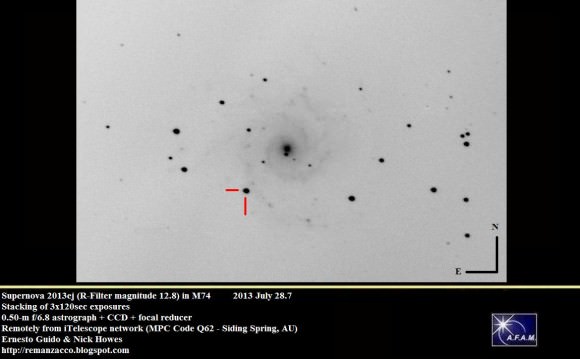
Additional information and imagery of this from the Remanzacco Observatory team can be found at their website, including an animation of a “before and after” the supernova exploded.
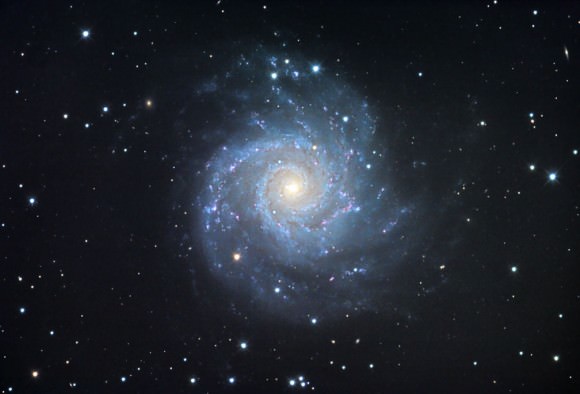
The Lick search uses a fully robotic or automated 30-inch (76 cm) telescope dedicated to scanning the skies for new supernovae. It nailed M74’s latest exploding star on July 25. Two previous supernovae flared in the galaxy – SN 2002ap and SN 2003gd – and rose to 12th and 13th magnitude respectively before fading away into obscurity.
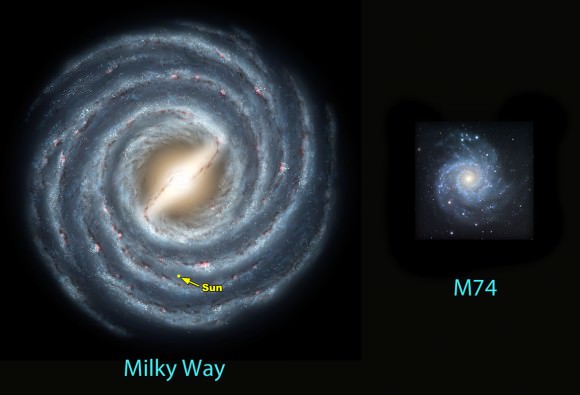
Three’s the charm as they say. A team of astronomers using a spectrograph at the Faulkes Telescope South at Siding Spring, Australia teased apart the supernova’s light and now know exactly what blew up. It appears our newcomer was originally a supergiant star at least 8 times as massive as the sun. After a relatively brief lifetime measured in the millions of years, the supergiant gobbled up the last of its fuel. With the gas gauge on “empty” and no new energy being produced in the core to hold back the force of gravity, the star imploded, sending a shockwave rocketing back in the opposite direction that tore it to bits.
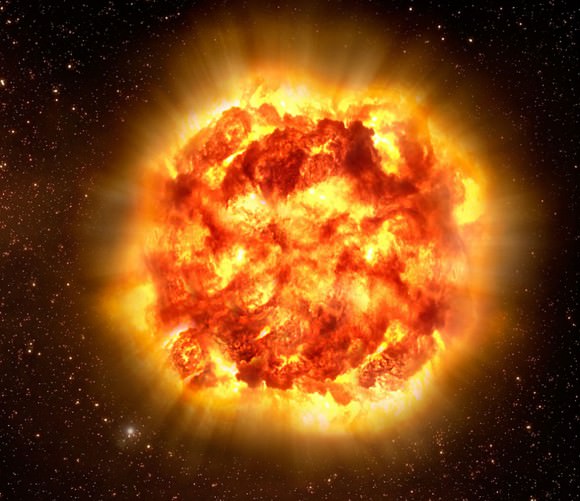
Called a Type II supernova explosion, the blast hurtles star stuff into space at up to 45,000 miles per second (70,000 km/sec). More amazing, a powerful supernova explosion can release as much energy as the sun during its entire 10 billion year lifetime. No wonder even small telescopes can spot these cataclysmic events from millions of light years away!
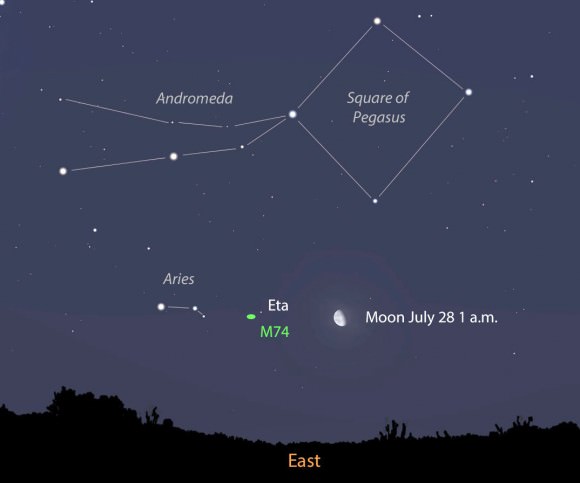
As additional photos and measurements come in, amateur astronomers with 8-inch and larger telescopes will have no problem spying the supernova once the last quarter moon departs the vicinity. It’s located 93″ (1.5′) east and 135″ (more than 2′) southeast of the galaxy’s core. The map and photo will help you track it down.
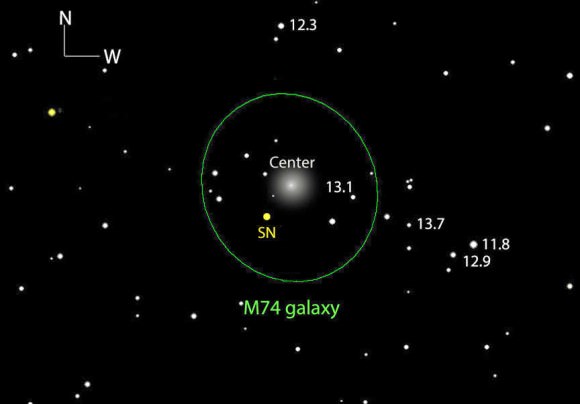
While M74 is relatively bright and appears spectacular in long-exposure photos, it looks like a large, dim featureless glow in smaller telescopes. Be patient and take your time to “star hop” to the supernova using the more detailed map. Matter of fact, you may want to wait until Tuesday morning or later to look. That’s when the waning moon will finally depart the area. Let’s hope our new guest remains bright.
Good luck meeting the latest star to mark the end of its life with the biggest blowout of all. For more information and photos, stop by Dave Bishop’s Latest Supernovae site.
* This article was updated at 6:30 pm CDT on 7/28/13

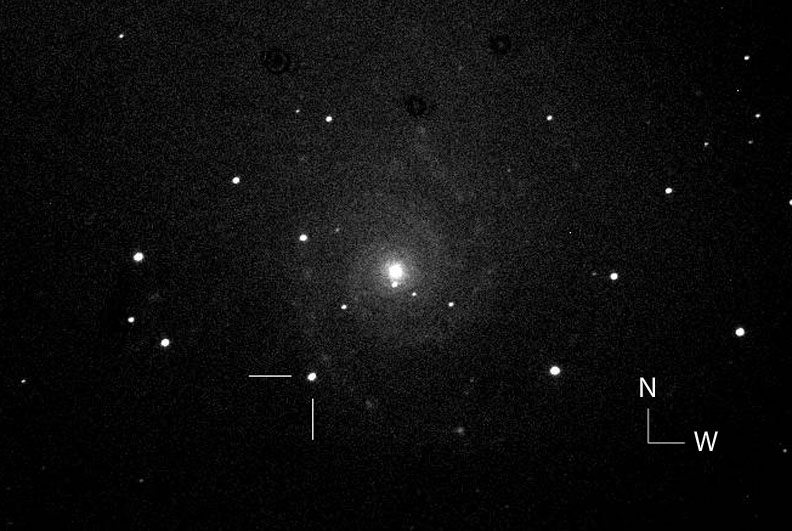
NW DISCOVERY OF SUPERNOVA M74 IN THE FEILD OF SPACE GLAXIES….
I long for a visible supernove in the Milky Way … we are OVERDUE … not one stuck behind the gas and dust lane that hides much of the galaxy from us
Betelgeuse may “go boom” any day, although more likely in thousands of years. I wonder how visible its growing nebula would be during the years afterwards. Gaia telescope will at least let us know where it is, current distance estimates range from 500 to 800 ly. To close for comfort anyway.
We got one in one in the Large Megallanic Cloud, SN 1987A, just 50kPc away 26 years ago. That was pretty close enough to get a lot of data. Neutrinos from it were registered in the super Kamiokane detector.
LC
This is the gambler’s fallacy. Most supernovae are independent events. If you look for years for a supernova, and don’t see anything, it is not like all the ‘good luck’ is building up like water behind a dam, and sooner or later it has to even out and you will see two in the same night when it goes. If you looked at Betelgeuse for a quarter of a million years, then you could say we are overdue for a supernova, but that’s rather different.
It went bang 32,000,000 years ago